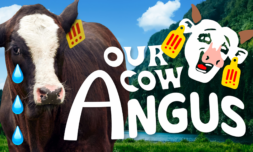The recent deaths of pregnant heifers, transported from the European Union to Turkey have heightened concerns about the welfare standards for live animal transportation.
Globally, animal transport has been trending upward over the years, driven by various factors ranging from demand for animal products to changes in industry practices. Last year, the market was valued at an estimated $352 million and is projected to grow at a compound annual growth rate of 4.3% in the next six years.
Specifically, between the European Union (EU) and Turkey, the trade of live animals has been going on for several years, notably since the early 2010s. With a sustained demand for breeding, fattening, cultural, and religious practices, currently, around 700,000 cattle and sheep are exported annually between the regions.
However, the process of animal transport between them has brought upon concerns in recent times.
A significant incident recently occurred when two trucks carrying 69 heavily pregnant heifers left a farm in Brandenburg, Germany, on a journey exceeding 2,000 kilometers to Turkey. Unfortunately, the animals never reached their destination due to bureaucratic hurdles at the EU’s external border, leading to dire consequences for their welfare.
The heifers were stranded at the Bulgarian-Turkish border for nearly a month under deplorable conditions. Reports indicate that many of the animals were subjected to extreme heat and inadequate care while confined in their trucks. Some died in their excrement, while others were ultimately slaughtered after enduring weeks of suffering without anesthesia.
This incident is part of a broader pattern of neglect and cruelty observed in live animal transport from the EU to Turkey. NGOs have documented numerous violations of animal welfare regulations during these transports, including overcrowding, lack of water and food, and excessive journey times that often exceed legal limits.
Even though the nations that the animals are being exported to may have their regulations, they are not strictly enforced. Animals in transport may face the issue of delays primarily due to bureaucratic issues related to documentation or even the lack of proper infrastructure to monitor and enforce animal welfare standards effectively.
Many are criticizing the regulatory framework that oversees the transportation of live animals. This regulation – the Council Regulation (EC) No 1/2005, was implemented in January 2007 and applies to the transport of live vertebrate animals within the EU and to other nations.
It aims to prevent any loss of welfare towards the animals from preventing injury to limiting long journeys. Yet, clearly as seen in recent events, this framework has failed to stay true to its apparent values
As such, there have been calls for updates to the regulation to enhance the standards of animal welfare throughout the entire process. Last year, the European Commission proposed updates such as stricter journey time limits, enhanced animal welfare standards, mandatory rest periods, and improvements in transparency and reporting.
However, many stakeholders in the matter argue that stricter changes are needed concerning the current faults in the enforcement and compliance front. In fact, 83% of respondents to a survey stated that the travel time for animal transport should be greatly reduced.
The EU’s trade in the live transport of farmed animals is the cause of unfathomable suffering and has no place in the 21st century. We must #BanLiveExports now https://t.co/gTHVAObtSC
— Compassion in World Farming International (@CIWF_Global) November 1, 2024
Advocacy groups are also calling for a ban on live exports to non-EU countries. They argue that transporting meat instead would mitigate the concerns of welfare that come with transportation. To support their efforts, there has been a growing public sentiment towards stronger animal welfare protections across Europe as seen by polls.
Most importantly, international cooperation is of the essence as it includes cross-border trade. This comes into effect through the standardization of animal welfare laws – ensuring that animals are treated consistently, regardless of where they are transported or where they ultimately end up.
Additionally, joint inspections and audits are also needed to identify and address compliance issues to enforce regulations effectively, and aid policy development.
The cherry on top of this solution would be the development of infrastructure such as improving border facilities and training programs for veterinarians and inspectors. This allows officials to recognize signs of distress in animals and understand the legal obligations towards their treatment.
Ultimately, this issue can very much be avoided in the future, only with the guarantee that the nations involved in the trade align their ethical standards toward live animal trade and transport.

















